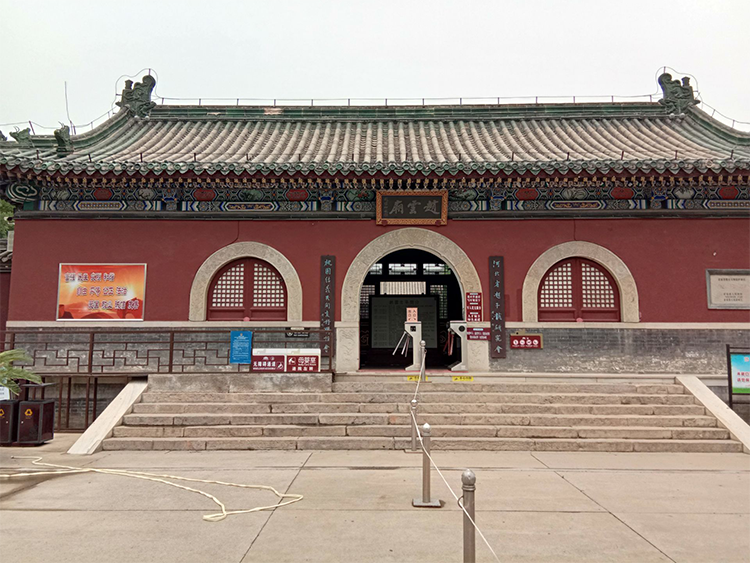Explore Chinese Religious Art at Pilu Temple: Ming Dynasty Mural Masterpiece
Nestled among quiet villages northwest of Shijiazhuang, Pilu Temple (Pílú Sì) is a little-known artistic treasure frozen in time. Founded in the Tang dynasty and rebuilt in the Ming, this Chan (Linji) Buddhist site draws cultural explorers with its vast Ming-era murals, solemn polychrome sculptures, and a powerful fusion of Buddhist, Taoist and Confucian imagery. Step through the gate and you enter a visual epic: a 122 square-meter water-and-land mural populated by over 300 deities and figures, each garment swirling with six centuries of pigment.
1. Historical Treasure in the River of Time
Pilu Temple traces its origins to the Tang Tianbao period (AD 742–756) and served as an important Linji school monastery. Most of the standing structures date from Ming dynasty restorations, and the Pilu Hall remains an exceptionally well-preserved artistic sanctuary. In 1961 the site was listed among China’s first Major Historical and Cultural Sites Protected at the National Level and ranked with the Mogao Caves and Yongle Palace as one of the country’s three great religious mural treasures. Faint traces of Yuan dynasty paintings still survive, creating a layered historical palimpsest that makes the temple an invaluable living archive for scholars studying religious-art evolution.
2. Pilu Hall Murals: A Visual Epic of Three Teachings
Entering Pilu Hall, visitors are immediately surrounded by brilliant color. The 122-square-meter water-and-land mural centers on the theme of “Three Teachings in Unity,” where Confucian sages, Buddhist bodhisattvas and Taoist immortals share a single pictorial stage. Over 300 figures appear in varied poses: Shakyamuni seated on a lotus throne, the Jade Emperor in flowing robes, Confucius holding a scroll, and folk deities like Thunder Lord woven into the composition. Executed with heavy-color line-fill technique, cinnabar, stone green pigments and gold leaf retain surprising brilliance after six centuries; garment lines flow like drifting clouds, giving the work its reputation as a culminating achievement of China’s ancient religious mural art.
Artistic decoding:
– Upper realm: Buddhist Buddhas and Taoist heavens indicate spiritual transcendence.
– Middle realm: Emperors, officials, literati and monks show worldly order.
– Lower realm: Hell scenes of karmic retribution serve as moral warnings.
This vertical tripartite composition echoes the “heaven-earth-human” cosmology and exemplifies Ming-era inclusivity in religious art.
3. Architectural and Spatial Expressions of Chan Aesthetics
Though modest in scale, Pilu Temple displays refined Ming Chinese Buddhist architecture:
– Pilu Hall: single-eaved xiēshān (hip-and-gable) roof with upturned eaves like outstretched wings. The painted coffer (zao-jing) contains mandala motifs; sunlight through lattice windows produces shifting light that animates the murals.
– Heavenly Kings Hall: polychrome guardian sculptures glare with bulging eyes and meticulously rendered armor—an excellent example of Ming realistic carving.
– Rear courtyard stelae: inscriptions record repair histories; a dragon-carved tablet head showcases the union of calligraphy and stone carving.

4. Immersive Visitor Experience: Observe, Respect, Participate
Pilu Temple remains an active religious site with a contemplative atmosphere:
– Morning bell and evening drum: the dawn bell is deep and resonant—visitors can listen quietly to absorb the temple’s meditative mood.
– Blessing ritual: light a stick of temple-provided eco-friendly incense and circumambulate the hall clockwise three times as a traditional act of respect.
– Photography policy: flash photography is strictly prohibited to protect pigments. Official guidebooks and museum-quality reproductions are available for purchase.
5. Local Tips from People Who Know
– Best time: arrive at opening (8:00 AM) for the fewest crowds and the most magical angled light on the murals.
– Hidden highlight: the weathered Yuan dynasty fragments in the rear hall, though fragmentary, are precious examples of earlier mural styles.
– Caution: street-side fortune-telling stalls may appear—politely decline to keep the focus on art and history.
Practical Information
– Address: Shangjing Village, Dubei Subdistrict, Xinhua District, Shijiazhuang. Search “Pilu Temple Museum” for navigation.
– Opening hours: 8:00–17:00 (winter until 16:30). Admission: ¥20 (RMB); WeChat Pay and Alipay accepted.
– Transport:
– Bus: Take Line 117 to “Pilu Temple” stop, then a five-minute walk.
– Car: Free parking is available at the east gate.
– Facilities: bottled water, a cultural souvenir shop, and vegetarian set meals (advance booking recommended).

Closing Thoughts
Pilu Temple may lack the crowds of China’s most famous monasteries, but every inch of its mural surface whispers of China’s cultural breadth and resilience. Standing beneath the painted heavens of Pilu Hall, you’ll encounter more than religious imagery—you’ll find a six-century conversation between artists, patrons and worshippers. This is not just a visit; it’s a cross-century dialogue with the soul of Chinese religious art.


